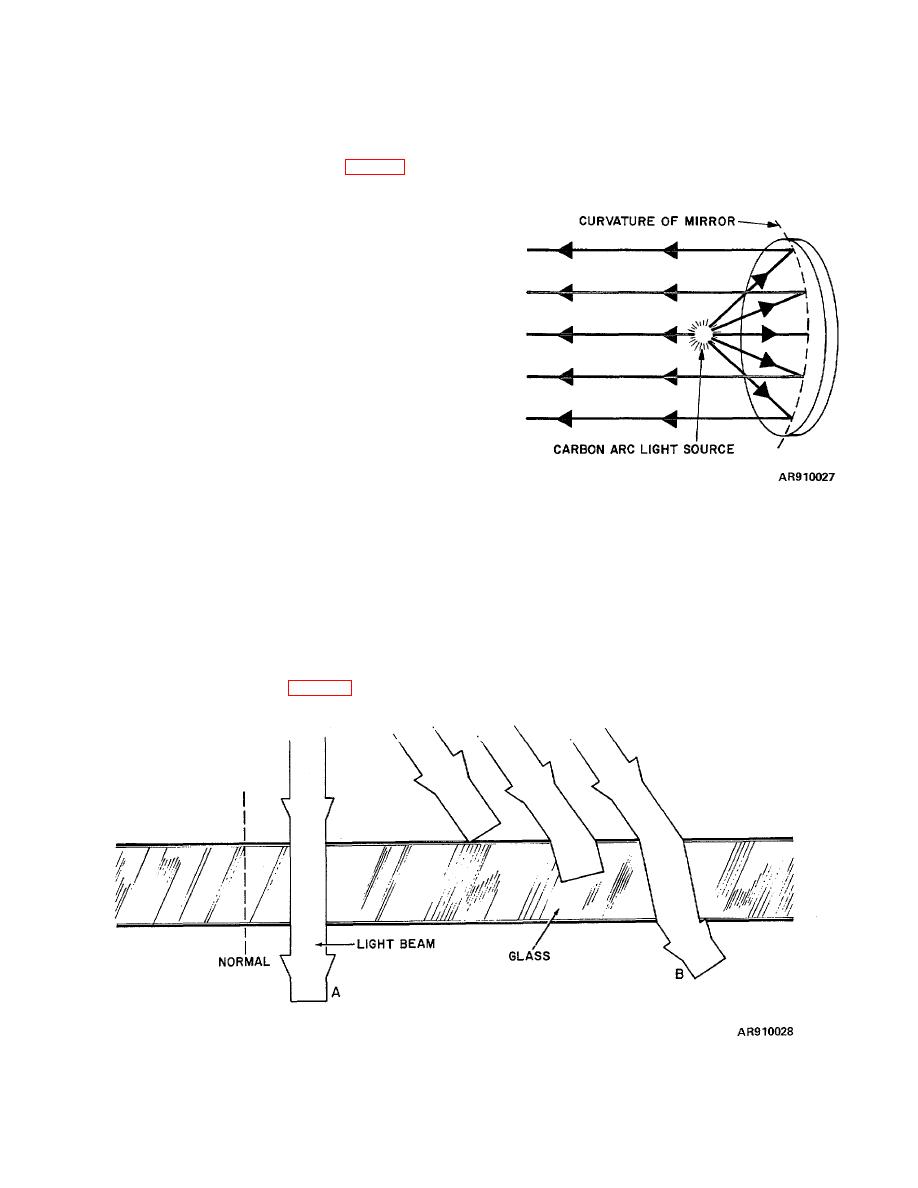 |
|||
|
|
|||
|
Page Title:
Figure 2-21. Projection by parabolic mirror. |
|
||
| ||||||||||
|
|
 TM 9-258
d. With a parabolic mirror, light rays emanating
from an infinitely small source located at the focal point
would be parallel after reflection, since this is the
principal focal point of the parabolic mirror (fig 2-21). In
practice, however, the source of light, which may be a
filament or an arc, is located in the principal point of
focus and the rays diverge as there cannot be a true
point source. All rays falling upon the parabolic mirror,
except those which are diffused or scattered, are
reflected nearly parallel to each other. This allows a long
powerful beam of light to be formed which diverges very
slightly.
Figure 2-21. Projection by parabolic mirror.
Section III. REFRACTION
surfaces of this plate are parallel and air contacts both
2-10. Refraction Through a Glass Plate.
surfaces. The glass and the air are transparent but the
a. What happens when light is refracted can be
glass is optically denser than the air. Light travels
understood by imagining a beam of light, indicated by a
approximately one-third slower in glass than in air.
broad "light ray" or "light beam" (fig 2-22), passing in
slow motion" through a sheet of glass. Both plane
Figure 2-22. Path of beam of light through sheet of glass.
2-15
|
|
Privacy Statement - Press Release - Copyright Information. - Contact Us |